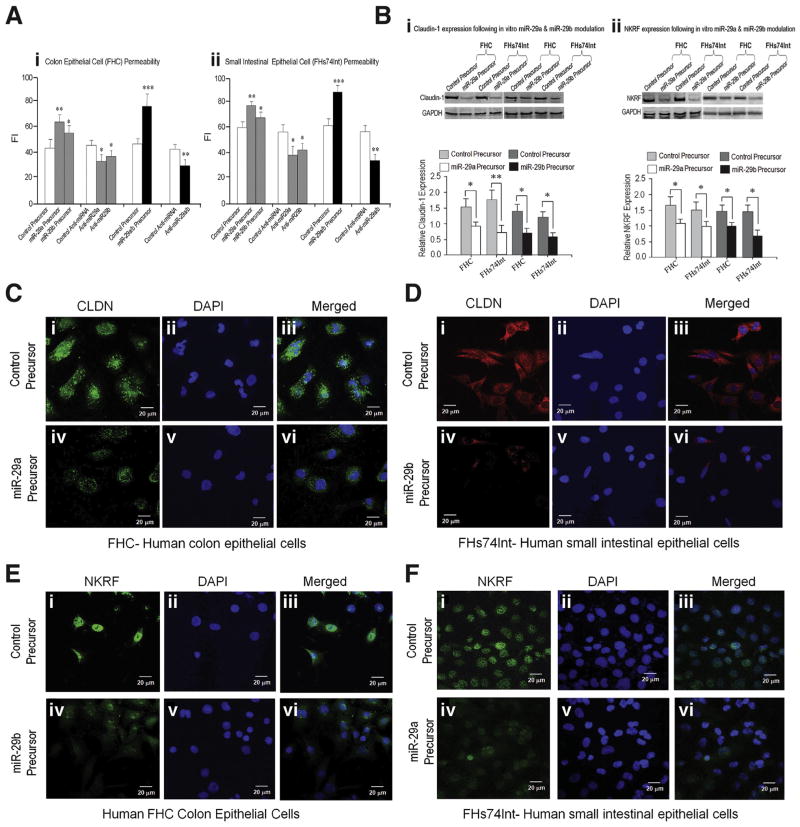Figure 5.
Recruitment of CLDN1 and NKRF prevents epithelia hyperpermeability via in vitro modulation of miR-29: Intestinal epithelial permeability was modulated by miR-29a and miR-29b as demonstrated in vitro by using fluorescence intensity (FI) to measure of epithelial cell permeability. Over-expression of miR-29a or miR-29b using precursors significantly enhanced epithelial permeability in both human FHC cells (A-i) and human FHs74Int cells (A-ii). Inhibiting miR-29a or miR-29b expression using anti-miRNAs had the opposite effect. Simultaneous over-expression or inhibition of both miR-29a and miR-29b showed even stronger effects (***P < .001; **P < .01; and *P < .05). Western blots (B-i) show a decrease in CLDN1 expression in human colon epithelial cells (FHC) and human small intestinal epithelial cells (FHs74Int) following transfection of miR-29a and miR-29b precursors compared with control precursor. (B-ii) Shows miR-29a and miR-29b regulation of NKRF expression in FHC and FHs74Int cells. There was a substantial decrease in NKRF expression after up-regulation of miR-29a and miR-29b using miR-29a or miR-29b precursors compared with control precursor (*P < .05; **P < .01). Confocal immunofluorescent staining of human FHC and human FHs-74Int cells for CLDN1 and NKRF expression is depicted in panels (C, D, E, and F). There were decreases in CLDN1 expression in FHC cells (C-iii) and in FHs74Int cells (D-iii) following overexpression of miR-29a or miR-29b (by using precursors of miR-29a or miR-29b) compared with control precursors (C-i and D-i). There were decreases in NKRF expression in FHC cells (E-iv) and FHs74Int cells (F-iv) after overexpression of miR-29a or miR-29b compared with control (E-i and F-i).

